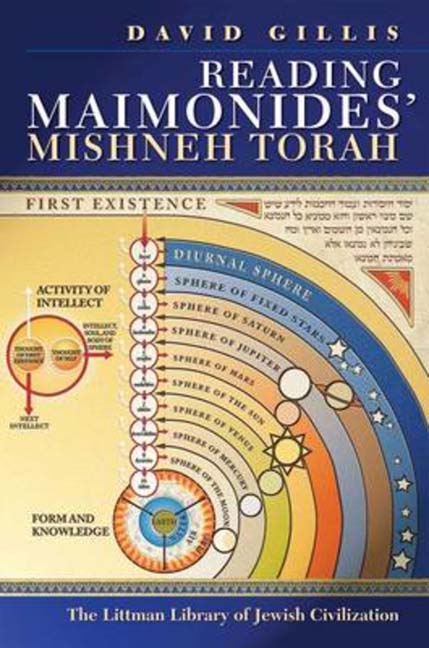Book contents
- Frontmatter
- Dedication
- Acknowledgements
- Contents
- List of Tables
- Note on Transliteration
- Note on Sources and Conventions
- Introduction: A Portrait of the Artist
- 1 In God’s Image
- 2 The ‘Great Thing’ and the ‘Small Thing’: Mishneh Torah as Microcosm
- 3 Emanation
- 4 Return
- 5 From Theory to History, via Midrash: A Commentary on ‘Laws of the Foundations of the Torah’, 6: 9 and 7: 3
- 6 Conclusion: Mishneh Torah as Parable
- Appendix I The Books and Sections of Mishneh Torah
- Appendix II The Philosophical Background
- Glossary
- Bibliography
- Index of Citations
- Index of Subjects
5 - From Theory to History, via Midrash: A Commentary on ‘Laws of the Foundations of the Torah’, 6: 9 and 7: 3
- Frontmatter
- Dedication
- Acknowledgements
- Contents
- List of Tables
- Note on Transliteration
- Note on Sources and Conventions
- Introduction: A Portrait of the Artist
- 1 In God’s Image
- 2 The ‘Great Thing’ and the ‘Small Thing’: Mishneh Torah as Microcosm
- 3 Emanation
- 4 Return
- 5 From Theory to History, via Midrash: A Commentary on ‘Laws of the Foundations of the Torah’, 6: 9 and 7: 3
- 6 Conclusion: Mishneh Torah as Parable
- Appendix I The Books and Sections of Mishneh Torah
- Appendix II The Philosophical Background
- Glossary
- Bibliography
- Index of Citations
- Index of Subjects
Summary
THE WAY in which Maimonides invokes and subtly adapts aggadah in Mishneh torah has been a subsidiary theme throughout this study, but here it will come to the fore. The burden of this chapter will be the analysis of two halakhot, each of which contains a series of biblical quotations, with special attention paid to the way Maimonides plays with the midrashic harmonics, as it were, of the biblical verses in question. The aim will be to show how, out of these aggadot, he creates an aggadah of his own, in which the ontological and teleological bearings of Mishneh torah are united. For, picking up the thread of the dual model of messianic redemption from the previous chapter, one might ask: how exactly does a book that begins with a timeless account of physics and metaphysics find its way to an ending about the age of the messiah, that is, about history?
The key, once more, is the figure of the prophet, for the answer to this question will be seen to lie in Maimonides’ theory of prophecy. As the highest level of intellectual awareness, prophecy is an apex at which ontology and teleology meet. This leads on to a discussion of how far, if at all, Mishneh torah itself can be considered prophetic.
Let us begin by observing a distinction between aggadah and halakhah. Once the decisors converge upon a ruling on a point of halakhah, then, for practical purposes, the talmudic to and fro on that point is otiose. By contrast, aggadah is divergent. The point of it is to involve the reader imaginatively and intellectually. Maimonides’ use of it is suggestive rather than apodictic. It will be found that, even where he does seem to approve a single midrashic interpretation of a verse, this is not necessarily the case, and that the deeper intention may be for the reader to play off the suggested interpretation against other possible interpretations. At the same time, the process is not uncontrolled: Maimonides may not exactly rule on Midrash, but he certainly orchestrates it in his own way.
Twersky's stress on the importance of Midrash in Mishneh torah was mentioned in the Introduction. What follows could be said to conform with his stricture that ‘The student of Maimonidean thought, following an integrative-holistic approach to the development of Maimonides’ ideas, will be especially attentive to this material’.
- Type
- Chapter
- Information
- Reading Maimonides' Mishneh Torah , pp. 326 - 367Publisher: Liverpool University PressPrint publication year: 2015

